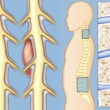Second impact syndrome (SIS) is regarded as a life-threatening emergency case. This condition is characterized by rapid and severe swelling of the brain (cerebral edema) due to a concussion incurred while the negative effects of a previous concussion have properly healed. Second impact syndrome may occur even from a very mild blow to the head several days or weeks after getting the initial concussion.
What Happens
Because of the second concussion while the impact of the previous concussion has completely gone away, the brain fails to regulate its own intracranial and cerebral perfusion pressure. It’s for this reason why a person with SIS suffers from cerebral edema, the severe swelling of his or her brain. Something like this can also lead to herniation of the brain.
Why SIS is Fatal
Medical authorities say that second impact syndrome can greatly increase the risk of death. This is true even if the secondary concussion is less intense than the very first one incurred days or weeks earlier. That’s because loss of consciousness caused by the initial blow to the head followed by another injury can cause problems such as alterations in the blood flow to the brain, acute changes in the metabolism, and ionic fluxes.
Symptoms of SIS
Headache, dizziness, nausea, vomiting, neck pain, sleep disturbances, fatigue, memory problems, and sensitivity to light and noise are some of the symptoms of second impact syndrome. It is also possible for someone with SIS to exhibit changes in personality. The condition may also cause the affected individual to have uneven size of the pupil of the eyes (anisocoria). Coma and respiratory arrest may happen as well.
How It’s Diagnosed
A doctor may diagnose the problem based on the individual’s history as well as the symptoms. In order to have the affected person’s brain checked, a computed tomography (CT) scan or magnetic resonance imaging (MRI) is warranted. Because second impact syndrome can be fatal, there are instances when the diagnosis is made during the autopsy.
Persons at Risk
Anyone may suffer from second impact syndrome. However, it is quite obvious that the persons more at risk of having SIS are athletes, most especially those who engage in the likes of boxing, hockey, football, baseball and skiing. Just about any athlete who participates in contact sports have higher chances of incurring the condition. According to the experts, young athletes are the ones more susceptible to having second impact syndrome.
How to Avoid SIS
First and foremost, it’s very important for the affected individual to refrain from engaging in activities that can cause him or her to end up with a secondary blow to the head while still completely recovering from the effects of the initial concussion. For instance, an athlete should refrain from going back to playing, training or doing any other related activities.
Complications of SIS
It’s important to note that second impact syndrome is regarded as an emergency because it is very much life-threatening in nature. Almost always, the condition leads to the person’s death or lifetime disability due to the changes that may happen to the brain. In order to prevent further brain tissue damage, surgery may have to be conducted.
Homecare
Someone with second impact syndrome should be monitored closely. Administration of the medicines prescribed by a doctor such as those for headaches, nausea and vomiting has to be done as instructed. Rest should be provided to the affected person and, unless otherwise prescribed by the doctor, the administration of sedatives should be avoided.
It’s a good idea to provide small frequent meals to the individual with SIS. There should be healthy snacks available that can provide energy, such as nuts, hard-boiled eggs, bananas, apples, cheese and energy bars. In case the person has a headache or cannot chew very well, he or she may be provided with pureed foods or even protein shakes.












